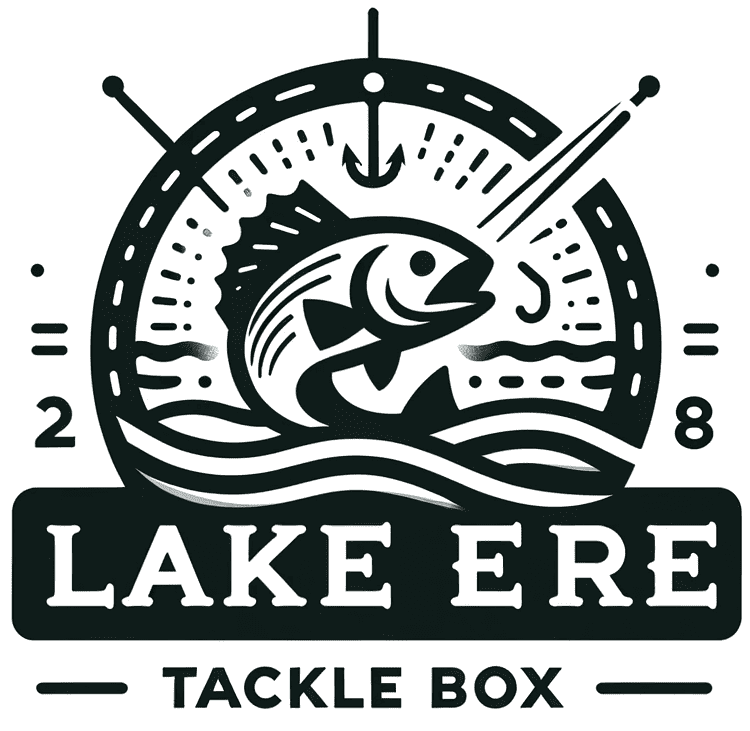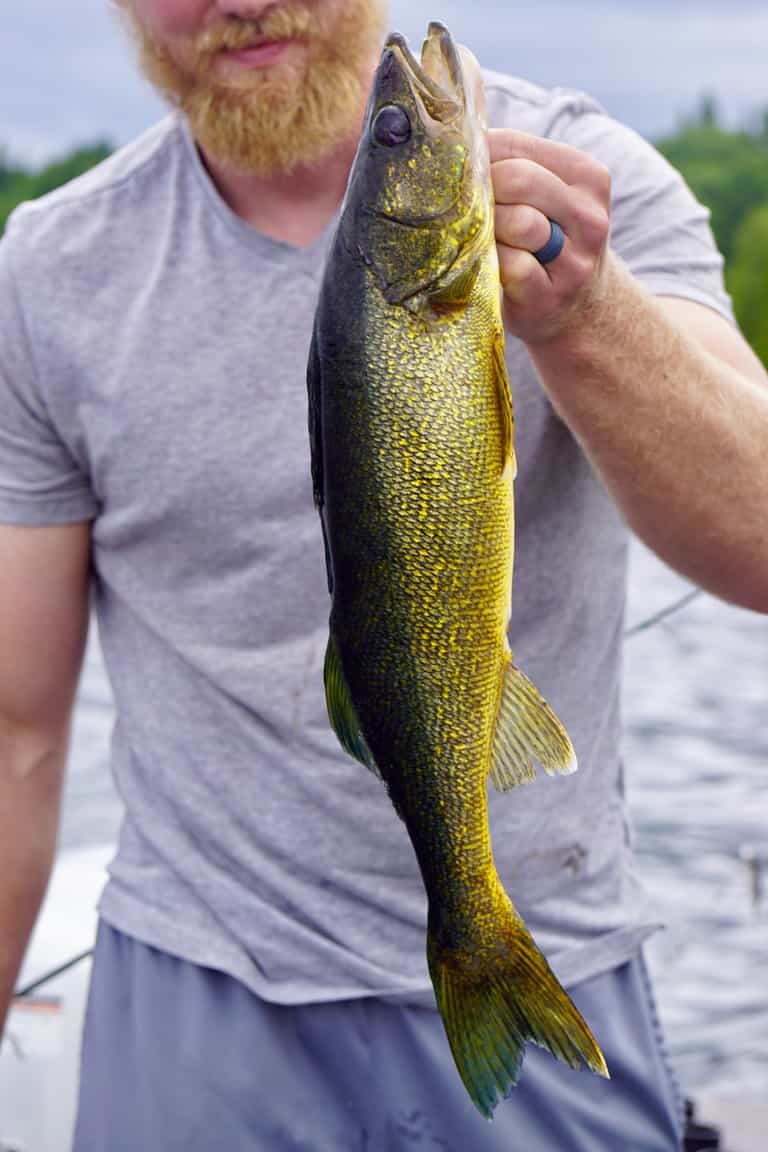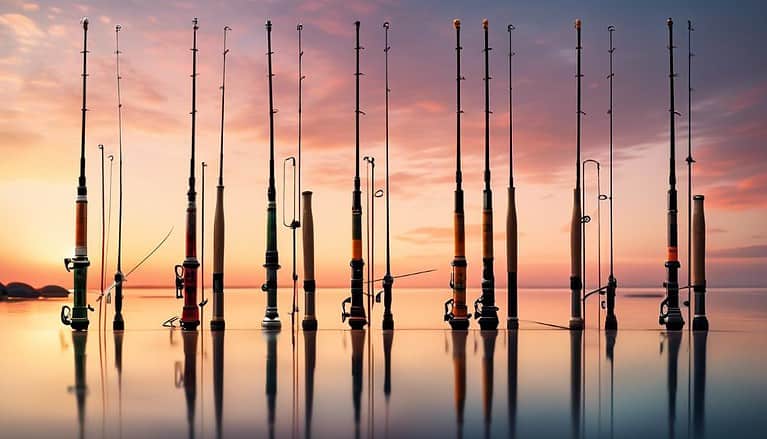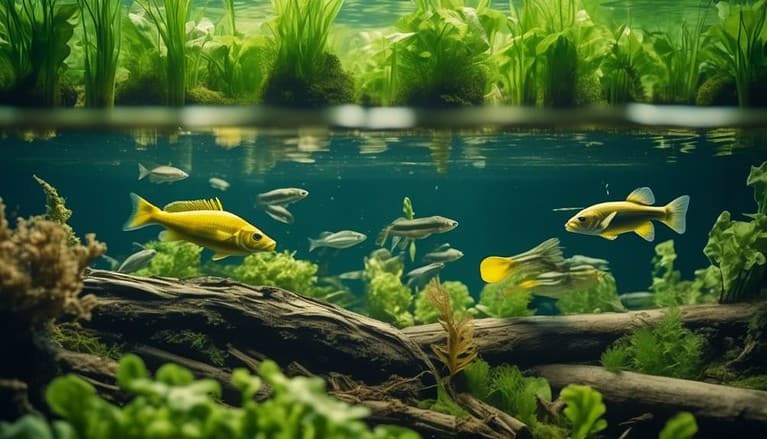Top 9 Fish Species in Lake Erie, Ohio

Ever felt the thrill of a tug on your line? You’re not alone. Lake Erie, Ohio, is an angler’s paradise, teeming with a variety of fish species. Whether you’re a novice or a seasoned pro, you’ll find a challenge here. From the feisty Walleye to the elusive Lake Trout, there’s a catch waiting for you.
Dive into our list of the 9 best fish species in Lake Erie, Ohio. It’s time to reel in your next big story.
Table of Contents
Key Takeaways
- Walleye is a thriving species in Lake Erie, thanks to the unique eco-conditions of the lake.
- Yellow Perch is abundant in Lake Erie and is highly sought-after by anglers due to its ease of catch and culinary value.
- Smallmouth Bass is a robust and sporty species that provides an aggressive fight when hooked, making it a favorite among anglers.
- Conservation efforts, such as catch-and-release fishing and supporting regulations, are crucial for maintaining a healthy population of bass species in Lake Erie.
Walleye: The Lake Erie Favorite
Dive into the exciting world of Walleye fishing, as it’s arguably the most popular and sought-after species in Lake Erie, Ohio. You’d notice that Walleye (Sander vitreus) thrive in the unique eco-conditions Lake Erie offers. This lake’s shallow depth, high nutrient content, and cool, clean waters create an exceptional habitat for their growth and reproduction.
Your keen eye would spot the distinctive characteristics of Walleye, like its elongated body, large mouth filled with sharp teeth, and marble-like eyes that glow in the dark. These physical traits aren’t just for show; they’re key to the Walleye’s survival. The teeth are perfect for a carnivorous diet, predominantly composed of other fish species, while their eyes adapt to low-light conditions, giving them a nocturnal hunting advantage.
Now, consider the lake’s seasonal temperature fluctuations. Walleyes prefer cooler waters, so they tend to migrate deeper during the summer and move to shallower areas in spring and fall. This behavior, tied to their spawning patterns, is critical for their population’s sustainability, making them a consistent catch for Ohio’s anglers.
In essence, the Walleye’s popularity in Lake Erie isn’t mere chance; it’s a direct result of the lake’s unique qualities and the species’ adaptive survival strategies.
Yellow Perch: A Popular Catch
Switching gears, you’ll find that Yellow Perch, another top-notch species in Lake Erie, is sure to grab your attention with its vibrant colors and pleasingly palatable nature. Typically measuring between 4 to 10 inches, the Yellow Perch, scientifically known as Perca flavescens, is characterized by its golden hue interspersed with black vertical bars.
From an ecological standpoint, Yellow Perch play a crucial role in Lake Erie’s ecosystem. They’re a primary food source for larger predatory fish, contributing to the food chain’s balance. However, their significance doesn’t stop there. They’re a highly sought-after species by anglers due to their abundance, ease of catch, and culinary value.
For you, the angler, Yellow Perch present an interesting challenge. They’re schooling fish, meaning once you’ve located a group, you’re likely to catch more. However, finding these schools can require patience and precision, as they frequently move in response to temperature changes and food availability.
In terms of taste, their meat is firm yet flaky, with a mild flavor that’s appreciated by many. So, whether you’re an avid angler or a culinary enthusiast, Yellow Perch in Lake Erie offer a remarkable blend of both fishing excitement and gastronomic delight.
Smallmouth Bass: The Sporty Species
You’ll find the Smallmouth Bass, a robust and sporty species, thriving in the cool, deep waters of Lake Erie.
Let’s examine their unique characteristics, explore effective fishing techniques, and consider crucial habitat conservation efforts.
In doing so, you’ll gain a comprehensive understanding of why this species is a top contender in Ohio’s angling scene.
Smallmouth Bass Characteristics
In your fishing adventures on Lake Erie, you’ll find that one of the most sporty species, the Smallmouth Bass, boasts several unique characteristics.
This robust species, scientifically known as Micropterus dolomieu, sports a dark, vertical stripe pattern along its sides, which can make it easily identifiable in the water.
It’s got a stout body and a broad, flat head, hence the name ‘smallmouth’. The jaw doesn’t extend beyond the back of the eye, unlike its large-mouthed cousin.
Typically, mature Smallmouth Bass range from 12 to 20 inches in length, but they can grow up to 24 inches long. They’re known for their aggressive fight when hooked, which makes them a favorite among anglers.
Their diet mainly consists of smaller fish, insects, and crustaceans, contributing to their feisty nature.
Fishing Techniques
To successfully hook a Smallmouth Bass, your technique should be as sporty as the species itself. Start by using medium action spinning gear. It’s essential to equip your rod with 6 to 10-pound test line. This allows the lure to move freely, imitating the small fishes and crustaceans that Smallmouth Bass prey on.
Next, choose your bait. Live baits such as crayfish or minnows are often effective, but artificial lures resembling these creatures work too. Cast your line near rocky areas, as Smallmouth Bass often hide there. Be patient, and keep your rod tip up to ensure a solid hook-set.
Bass Habitat Conservation
While mastering the art of catching Smallmouth Bass can be exhilarating, it’s equally crucial to understand and respect their habitat to ensure their continued presence in Lake Erie.
Smallmouth Bass prefer rocky or sandy bottoms with ample underwater structure for shelter and feeding. They thrive in clean, cool, oxygen-rich waters. Overfishing, pollution, and habitat destruction are significant threats to their population.
You can play a part in conserving their habitat by practicing catch-and-release fishing, disposing of trash properly, and advocating for clean water initiatives. Additionally, supporting regulations that limit the catch size and number can help maintain a healthy population.
Channel Catfish: Night-time Angling Star
Brimming with excitement, you’ll find that channel catfish truly shine as the stars of night-time angling in Lake Erie, Ohio. These nocturnal creatures, scientifically known as Ictalurus punctatus, thrive in the lake’s warm, murky waters, making them an angler’s dream once the sun goes down.
Their sensory barbels, or “whiskers”, help them detect food in the dark, enhancing your chances of a successful catch. You’ll often find them near the bottom, where they scour for food. They are omnivorous, so a variety of baits will work, including minnows, nightcrawlers, and shrimp.
Here’s a quick guide to help you:
| Best Time to Fish | Bait Options |
|---|---|
| Dusk to Dawn | Minnows |
| Nightcrawlers | |
| Shrimp |
A word of caution: channel catfish are known for their fight. They can reach a length of 40-50 inches and weigh up to 50 pounds, making them one of the largest freshwater species in Lake Erie. So, gear up and be prepared for a thrilling angling experience under the stars with these night-time swimming marvels.
Freshwater Drum: The Underrated Gem
Moving on from the nocturnal channel catfish, you’ll find the freshwater drum, often overlooked but a true gem of Lake Erie, waiting to challenge your angling skills. This species, scientifically known as Aplodinotus grunniens, is the only member of its family that inhabits freshwater environments.
You’ll recognize the freshwater drum by its silvery-gray body and humped back. It’s also known for its unique croaking sound, produced by a special muscle vibrating against the swim bladder. This drumming sound is the reason for its name.
The freshwater drum is a bottom dweller, typically found in large, slow-moving or standing water bodies with sandy or muddy bottoms. It’s omnivorous, feeding on a diet of mollusks, insects, fish, and crustaceans. This diverse diet makes it less picky, increasing your chances of a successful catch.
However, don’t underestimate the freshwater drum. Mature specimens can reach up to 30 inches in length and weigh up to 22 pounds. With a strong, stubborn fight, they’ll test your angling prowess. But the reward is worth it. Freshwater drum meat is firm, white, and flavorful, making it a delicious catch.
White Bass: The Springtime Catch
Switching your attention from the underrated freshwater drum, you’ll encounter the white bass, a real treat for anglers during the spring season in Lake Erie. This species, scientifically known as Morone chrysops, is a medium-sized fish that provides a thrilling challenge and a tasty reward.
Here’s what makes the white bass stand out:
- Seasonal Patterns
- Spring: This is the prime time to catch white bass. They move into tributaries for spawning, making them more accessible.
- Summer/Fall: They retreat to deeper waters, but skilled anglers can still find them.
- Habitat Preferences
- Shallow Waters: During spring, they prefer areas with gravel or sandy bottoms for spawning.
- Deep Waters: In other seasons, they’re found in deeper, cooler parts of the lake.
- Dietary Habits
- Fish: They primarily eat smaller fish like shad and minnows.
- Invertebrates: They also ingest invertebrates, especially when young.
Understanding these aspects about the white bass will help you maximize your catches. In the spring, when the waters are teeming with this species, you’ll appreciate its contribution to the rich biodiversity of Lake Erie.
Northern Pike: The Aggressive Predator
After you’ve had your fill of the springtime white bass, you’ll want to set your sights on the northern pike, an aggressive predator that adds a thrilling challenge to your Lake Erie fishing experience. Known for their fighting spirit and impressive size, northern pike are a true test of a fisherman’s skill.
| Characteristics | Northern Pike |
|---|---|
| Average Length | 18 – 30 inches |
| Average Weight | 3 – 7 lbs |
| Fishing Season | Late spring to early fall |
They’re a long, slender species, and their coloration varies from greenish to brownish, with a series of short, light bar-like spots on the flanks. Their sharp, pointed teeth are perfect for grasping and holding onto prey, making them one of the top predators in Lake Erie.
When fishing for pike, you’ll need to use larger lures and heavy-duty gear to withstand their aggressive strikes. The thrill of landing a large, feisty pike is unmatched and will leave you with a story to tell.
As the leaves begin to turn and the water temperatures drop, your attention may shift to our next species, the steelhead trout, the seasonal visitor.
Steelhead Trout: The Seasonal Visitor
You’ll find the Steelhead Trout, a seasonal visitor to Lake Erie, quite intriguing due to its migratory behavior.
To catch these elusive creatures, it’s essential to understand their seasonal patterns and adapt your fishing techniques accordingly.
Take into account the Trout’s diet variations, as this can significantly influence your success in angling them.
Steelhead Trout Migration
When you’re fishing in Lake Erie, you might notice that as fall approaches, the steelhead trout begin their annual migration, transforming the lake into a bustling hub of activity. These hardy fish travel from the open waters of the lake to their spawning grounds in the tributaries.
This migration is driven by:
- Environmental cues:
- Decreasing light levels
- Falling water temperatures
- Biological imperatives:
- Urge to reproduce
- Need to return to natal streams
- Physical factors:
- River flow rates
- Presence of barriers
Understanding these factors can help you predict the timing and route of the migration. This knowledge, combined with your angling skills, can increase your chances of a successful catch.
Seasonal Catching Techniques
As a seasoned angler, you’re probably aware that the steelhead trout’s migration patterns can greatly influence your catching techniques throughout the seasons.
During spring, trout are typically found in the shallower waters of tributaries, making fly fishing a highly effective method.
Come summer, they move deeper into the lake, where trolling with downriggers proves successful.
In fall, they return to tributaries for their spawning run, and drift fishing with spawn sacs or artificial eggs becomes optimal.
During winter, ice fishing techniques, such as using jigging spoons, can yield a great catch.
Trout’s Diet Variation
Now, let’s delve into the diet variation of the steelhead trout, a seasonal visitor to Lake Erie. This trout’s diet fluctuates according to availability of food sources, changing seasons, and its life stage.
- Juvenile stage:
- Primarily zooplankton and aquatic insects.
- Adult stage:
- Feeds more on fish, including minnows and smaller trout.
- Occasionally consumes aquatic invertebrates.
- Seasonal variations:
- Summer: Diet leans more towards terrestrial insects.
- Winter: Majorly reliant on fish and invertebrates present under ice.
Understanding this dietary variation is crucial for successful fishing. When you know what steelhead trout are eating, you can choose your bait more effectively. So, tailor your strategies according to the season and the trout’s life stage for a successful catch.
Lake Trout: The Deepwater Dweller
If you’re angling for a deepwater challenge, you’ll find the Lake Trout to be a formidable and rewarding catch in Lake Erie, Ohio. These cold-water fish, scientifically named Salvelinus namaycush, prefer temperatures between 40-55°F, causing them to dwell in deeper waters during the warm summer months.
As you tackle this challenge, you’ll need to understand their unique diet and behavior. Lake Trout are known for their voracious appetites, primarily feasting on other fish like whitefish, smelt, and even other trout. They’re ambush predators, typically lying in wait for prey to swim by before making a swift attack.
The size of Lake Trout can vary greatly, typically between 10-40 pounds, but some rare specimens have exceeded 100 pounds. They’re known for their distinctive marbled, dark green or gray bodies with creamy white spots.
Lake Trout are slow-growing but long-living, with some individuals reaching over 20 years of age. This longevity makes them susceptible to overfishing; therefore, responsible fishing practices are essential.
Fishing for Lake Trout is more than just a sport. It’s a dance with nature, requiring patience, skill, and respect for the ecosystem. Happy fishing!
Frequently Asked Questions
What Types of Fishing Gear Are Most Effective for Catching the Various Fish Species in Lake Erie, Ohio?
You’ll find trolling with crankbaits effective for walleye, while using live bait on a drop-shot rig works for yellow perch. For smallmouth bass, try spinnerbaits or soft plastic lures.
What Are the Peak Fishing Seasons for Each Fish Species in Lake Erie, Ohio?
You’re wondering about peak fishing seasons in Lake Erie, Ohio. Walleye’s prime is March through April, while yellow perch thrives in September. Bass, both small and large, flourish from June to August.
Are There Any Specific Fishing Regulations or Laws Pertaining to Fishing in Lake Erie, Ohio?
Yes, there are specific regulations for fishing in Lake Erie, Ohio. You’re required to have a valid fishing license, respect size and bag limits, and observe seasonal closures for certain species. It’s crucial you’re informed.
What Types of Bait Are Most Successful for Each Fish Species in Lake Erie, Ohio?
You’ll find that live minnows work best for Walleye and Yellow Perch. Crayfish are ideal for Smallmouth Bass. Steelhead Trout prefer spawn sacs or minnows. Remember, choice of bait can greatly impact your catch results.
Are There Any Environmental Concerns or Threats to the Fish Species in Lake Erie, Ohio?
Yes, there are. Harmful algal blooms, pollution, and invasive species like the zebra mussel pose major threats. They’re disrupting the ecosystem balance, threatening the fish you cherish in Lake Erie, Ohio.
Conclusion
So, you’ve discovered the diverse aquatic tapestry of Lake Erie, Ohio. From the coveted Walleye to the underrated Freshwater Drum, each species adds a unique thread to the lake’s vibrant ecosystem.
Whether you’re drawn to the stealth of Channel Catfish or the aggression of the Northern Pike, there’s a fish tale waiting for you.
So grab your gear and let the lake’s watery depths lure you into the dynamic dance of nature’s underwater ballet.







3 Comments
Comments are closed.